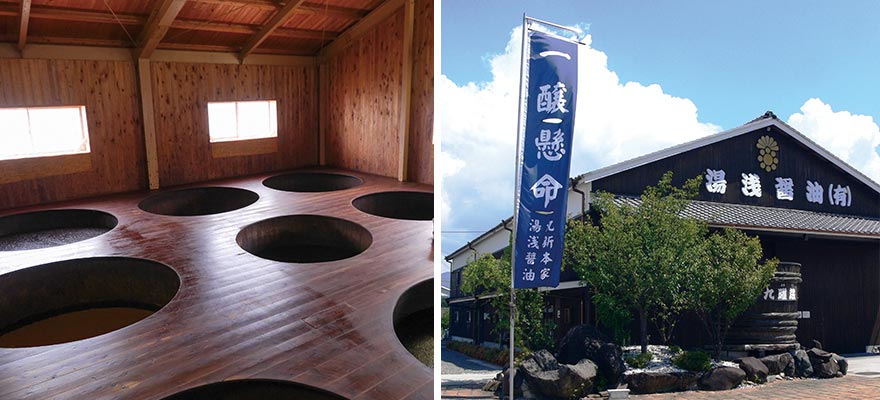Home > Highlighting JAPAN >Highlighting Japan April 2014>Washoku
Highlighting JAPAN
Washoku
An Unmistakable Aroma
750 years of soy sauce tradition takes to the tables of Europe's finest restaurants

Soy sauce, or shoyu, is almost indispensable to the Japanese dining experience. There are over 1,000 large and small soy sauce companies throughout the country, each with its own unique recipe and flavor. Out of this large field of competitors, how does a small brand from the quaint town of Yuasa in Wakayama Prefecture find its way into the kitchens of not one but nine Michelin-starred restaurants across Europe? And how has a company that makes up an estimated 0.01 percent of Japan's soy sauce supply won Belgium's prestigious Monde Selection Gold Quality Award every year since 2006?
According to Toshio Shinko, the warm-hearted and down-to-earth president of Yuasa Soy Sauce Co., Ltd., it comes down to a combination of history, tradition, dedication and passion.
While there are various competing accounts as to how soy sauce came to Japan, in Yuasa it's said it all began around 750 years ago. A monk who spent time in China realized that the local process used to make hishio, a fermented seasoning, was only a short step away from making miso, a traditional soy-based Japanese food product. Upon returning to Japan, the monk settled in the Yuasa area and began producing soy sauce, instructing others in the process as well. From there, the recipe spread and evolved over time.
Soy sauce is made from wheat and soybeans that are fermented and matured in salt water and koji mold spores. Yuasa Soy Sauce's signature product is made using carefully selected ingredients all grown in Japan. The fermentation and brewing process is based on techniques perfected over 750 years in Yuasa, while the local water has a combination of minerals that's said to be particularly suited to soy sauce. While the vast majority of soy sauce is now made with the crushed remnants of soybeans that have been pressed for their oil, Yuasa Soy Sauce uses the entire bean, combining it with roasted whole grain wheat. Using a type of black soybean grown in Tanba, Kyoto Prefecture, the sauce is left to ferment for up to two years – as much as four times longer than industrial sauces. The combination of all these elements results in a flavor that's truly unlike any other soy sauce in Japan.
One of the factors that sets Yuasa Soy Sauce apart is its aroma. It's subtle and delicate but still has a presence that, when paired with its slightly sweet taste, completely fills the olfactory senses. It's the unique presence that this sauce creates in food that has captured the imaginations of European chefs and inspired them to incorporate it in their creations. From roasts to cakes, the dishes they prepare are not what one would typically associate with soy sauce, but this subtle addition to European cuisine has been the primary catalyst for Yuasa Soy Sauce's global success.
His company's international accolades and growing overseas market haven't changed Shinko's core focus, however – they're just byproducts of his passion. "I don't make soy sauce for the money," he says. "I want to make the best soy sauce I can make, not only to show the world Yuasa's history and tradition of soy-sauce-making, but also to share that history and tradition with the children of Yuasa. I want them to grow up proud to know their small town is a global center that produces soy sauce the whole world enjoys."
Shinko devotes much of his time and effort to community outreach work, collaborating with local farmers and school programs to not only teach children their town's soy-sauce-flavored history but also to let them experience every part of the soy sauce process, from growing soybeans all the way to cooking a meal they can enjoy with their sauce. In so doing, he hopes that future generations will continue to produce soy sauce in Yuasa and bring its unique flavor to tables around the world.
© 2009 Cabinet Office, Government of Japan






